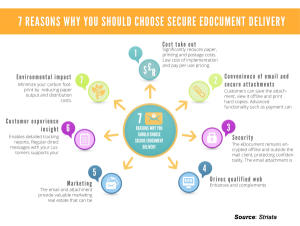Do you feel that people hear you? Not just hear you even, but really, truly listen?
People are talking every day on social media. The scale at which information is coming to us can be overwhelming.
“Every second, on average, around 6,000 tweets are tweeted on Twitter.” Internet Live Stats
Six thousand tweets per second. Wow.
It brings to mind the lyric,
“All the lonely people, where do they all come from?” Eleanor Rigby
Mind you, quite a bit of those tweets are news or content marketing, I’m sure. But think about it.
What if only 1% of those tweets were from people just wanting to be heard?
That equates to 60 people a second.
If I could insert a code here that would make this post pause right here for 60 seconds, 3,600 tweets would have been sent.
Listening starts with intent.
Though listening starts with hearing it isn’t just hearing. And some would argue that hearing starts with attention. Attention starts with intent. Therefore, listening starts with intent.
When you’re at lunch with your friend, do you listen to what she’s saying or are you distracted by the waiter, your food being undercooked, or your phone?
When learning a new subject, you muster all of your powers of concentration just to absorb and retain. Do we do that in conversation?
People are telling you all about themselves. It’s what they say. It’s what they don’t say. It’s their body language. Are they facing you? Are they making eye contact? Do they pause and choose their words carefully or just say what comes to mind?
Listening is a prerequisite to connection. You will never feel connected to someone who doesn’t listen. And vice versa.
This is why listening is a valuable skill to invest in — both physically and digitally.
Are you listening?
Back when I used to teach Sunday School, I would tell the kids to listen when I wanted to make a point. They’d say, “I hear you, Miss Bridget.” But hearing is not listening.
That means we’re not just looking for when our name is mentioned or our brand is mentioned. This means we’re interested in other people and what they have to say.
“So enough about me. What do you think of me?”
We laugh at that joke but how often is it true? How many people drive you crazy because it’s a two hour monologue every time you go to lunch?
If you truly care about people, you will care about what they have to say. There’s two sides of listening.
- You should want to listen to your friend.
- Of course, you want a friend who listens to you.
In our personal, professional, and digital lives, the people who listen are the people who are trusted. They’re liked. They’re successful.
How can you improve your listening?
Listening requires patience.
Listening requires quiet. Quiet is a hard thing. I’m listening to Pandora as I write this. Quiet makes us uncomfortable at times, but it can be such a teacher.
“Although listening might sound more difficult than talking, all it requires is that you be fully present” Carol Stephen
In order to be a good listener, regardless of the situation, you have to set aside your agenda. I’ve learned this over and over and over in all kinds of situations: one-on-one conversations, business meetings, Bible studies, etc.
Yet, I must confess that I fail more often than I’d like. I forget to stop talking. I forget to stop interrupting. I fail to say something I should. I fail to look at them in the face and say, “You are worthy of love. You are valuable.”
So, how do you listen digitally?
Sit on your hands. Just kidding. Well, not really.
Twitter Lists. This is the best tool for listening digitally. It’s that simple.
Secondly, it’s about time. Spend more time reading than replying. Find out who your customers are. Find your friends. Spend time reading your friends’ posts on Facebook, instead of your own. Read what they say. Spend time reading someone else’s blog, not just refreshing your own Google Analytics.
Many days, I spend 15-20 minutes just reading tweets in my lists. Why not respond, you ask?
Situational awareness is key, both in person and online.
Have you ever been in a conversation and then another person walks in the room and just starts talking? It distracts. It can be considered obnoxious or rude.
Twitter often has conversational tweets. Although Twitter is the most forgiving about “jumping in a conversation,” in order to bring value to the conversation you need context. You only get context if you gain some situational awareness.
I rarely jump in on actual conversations. Rather, I’ll reply to a tweet that is directed to the general public.
If someone says they’re really bummed out their computer broke, I’ll reply “bummer.” If someone is excited to launch a new website, I’ll say, “congratulations.” You need situational awareness in order to mirror emotions.
Mirroring
We are hard-wired in our brains to mirror emotions. This is why babies smile at us when we smile at them. If someone laughs, laugh with them. When they cry, cry with them. Be empathetic. This is our humanity. This is how we are approachable, authentic, relatable, and likable.
We all want to be liked.
It all comes down to this: Invest in people, and they’ll invest in you.
Listening is an investment with a good ROI.
Bonus: Ted Talk
“Let’s define listening as making meaning from sound.” Julian Treasure
(69)







